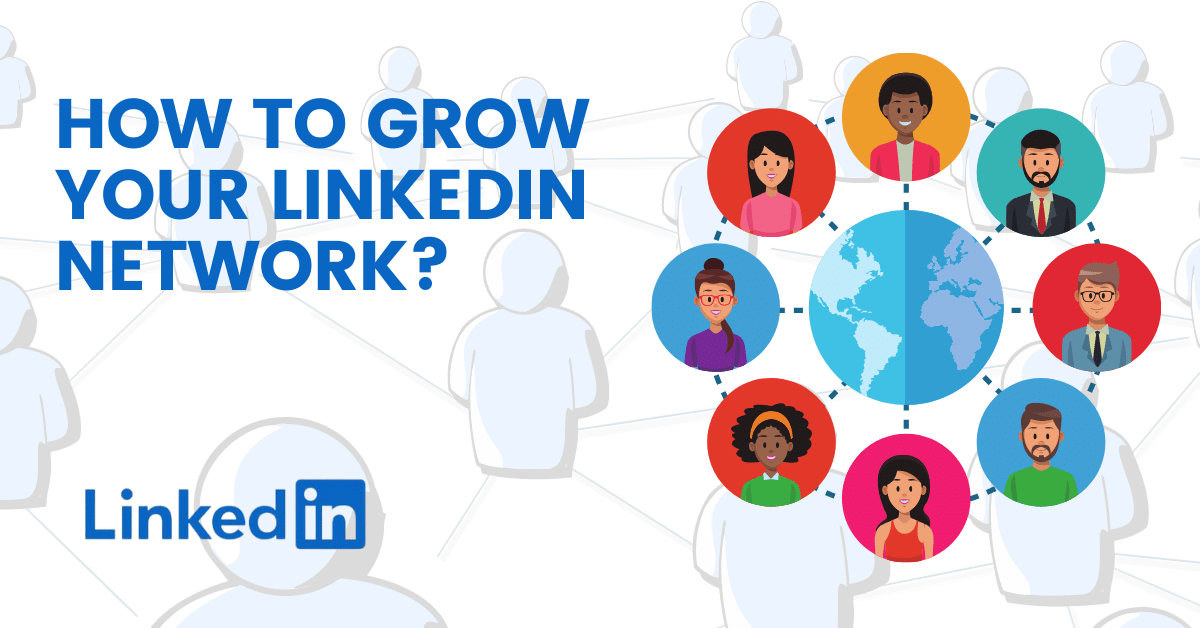LinkedIn has transformed the way professionals connect, share, and grow their careers. Whether you’re a job seeker, entrepreneur, or seasoned professional, building a robust LinkedIn network is essential for unlocking new opportunities and enhancing your industry presence. But how do you go about expanding your network effectively? This post will explore key strategies tailored to help you grow your
Understanding the Importance of a Strong LinkedIn Network
Having a strong LinkedIn network is about more than just numbers; it’s a gateway to opportunities, insights, and invaluable professional relationships. Here’s why you should invest time in cultivating a rich network:
- Career Opportunities: A solid network can lead to job openings, partnerships, and freelance gigs that you might not find elsewhere. Recruiters often scout LinkedIn for candidates, making a strong profile vital.
- Industry Insights: By connecting with professionals in your field, you gain access to industry trends, best practices, and valuable resources that can enhance your knowledge and skills.
- Personal Branding: A well-curated network reflects your expertise and interests. Engaging with relevant content and connections positions you as an active participant in your industry.
- Mutual Support: Networking is a two-way street. A strong network allows you to support others and, in return, receive help when needed—whether advice, referrals, or simply a shared resource.
- Visibility: The more connections you have, the more people will see your updates, posts, and interactions. A larger network increases your visibility and credibility within your industry.
In summary, growing your LinkedIn network isn’t just about adding contacts; it’s about forming meaningful connections that can catapult your career in ways you hadn’t imagined. Ready to dive deeper? Stay tuned for strategic tips to enhance your LinkedIn experience!
Optimizing Your LinkedIn Profile
Your LinkedIn profile is much more than just an online resume—it's the first impression many professionals will have of you. Optimizing your profile can make a significant difference in how you're perceived and how often you show up in searches. Here are some essential tips to ensure your profile stands out:
- Professional Profile Picture: Your profile picture should be clear, professional, and friendly. Choose a high-resolution image where you're the focal point, ideally with a plain or neutral background.
- Compelling Headline: Instead of just listing your job title, use your headline as a branding statement. Consider what makes you unique or the value you bring. For example: "Sales Specialist | Helping Businesses Boost Revenue through Innovative Solutions."
- Detailed Summary: Your summary is your story—make it engaging! Discuss your background, skills, accomplishments, and what you're passionate about. Remember, this is your chance to showcase your personality.
- Skills & Endorsements: List relevant skills and request endorsements from colleagues. This not only highlights your strengths but also boosts your credibility.
- Recommendations: Ask past supervisors or colleagues for recommendations. Their testimonials provide social proof of your expertise.
- Engage with Content: Share articles, comment on posts, and write your content. This keeps your profile active and showcases your knowledge in your field.
By fine-tuning these elements, you're essentially creating a magnet that attracts connections, opportunities, and, ultimately, growth in your professional network.
Strategies for Connecting with Others
Making meaningful connections on LinkedIn can significantly amplify your networking efforts. However, sending out generic connection requests won't cut it. Here are some effective strategies to build a robust network:
- Personalized Connection Requests: Always customize your connection request. Mention where you met, why you want to connect, or any mutual interests. For example: "Hi [Name], I enjoyed your article on [Topic]. I’d love to connect and discuss our shared interests in [Industry]."
- Utilize Alumni Networks: Your school or university's alumni network can be an excellent resource. Reach out to fellow graduates; you might find common ground or shared experiences.
- Join Relevant Groups: Being part of LinkedIn groups in your industry offers a platform for discussions. Engage actively and connect with like-minded professionals you resonate with.
- Attend Virtual Events: Many organizations host webinars or virtual networking events. Participate actively, and don’t hesitate to connect with fellow attendees afterward.
- Follow Up: After making a new connection, send a thank-you message or share a relevant article. This helps to maintain the relationship and shows your genuine interest.
Remember, the goal is not just to grow your number of connections but to build meaningful, mutually beneficial professional relationships. With these strategies, you’ll be well on your way to an enriched LinkedIn experience!
Engaging with Content to Expand Your Reach
When it comes to growing your LinkedIn network, one of the simplest yet most effective strategies is engaging with content. This doesn't just mean scrolling through your feed; it's about actively participating in conversations and sharing valuable insights. So how can you make the most out of your engagement?
- Like and Comment: Start by liking posts from your connections and industry leaders. But don't stop there! Leave thoughtful comments that contribute to the discussion. This not only showcases your expertise but also puts you on the radar of others in your field.
- Share Relevant Articles: Post articles or blog posts that resonate with your industry. Accompany them with your thoughts or questions to encourage dialogue. Your connections will appreciate the valuable content, and it might spark new connections!
- Tag Influencers: If you're sharing something particularly relevant to someone you admire, tag them! This can increase the visibility of your post beyond your immediate network, potentially drawing in a wider audience.
- Post Regularly: The more active you are, the more likely others will engage with your content. Aim for consistency—whether it’s weekly updates, insights, or sharing success stories.
Incorporating these strategies into your daily LinkedIn activities can help you build connections with like-minded professionals and expand your network organically.
Utilizing LinkedIn Groups for Networking Opportunities
LinkedIn Groups are a goldmine for networking and discovering new professional relationships. They provide a platform where you can connect with people who share similar interests or industries. But how do you effectively utilize these groups?
- Join Relevant Groups: Look for groups that focus on your area of expertise or interests. You can search using keywords related to your profession or industry. Joining groups related to your field not only opens up networking opportunities but also helps you stay updated on industry trends.
- Participate Actively: Once you’ve joined a group, don’t just lurk in the shadows. Contribute to discussions, ask questions, and offer advice. Posting your thoughts on relevant topics can position you as a thought leader and attract new connections.
- Initiate Conversations: Don’t hesitate to start your own discussions. Share interesting articles or pose questions that encourage group members to share their insights. This can spark engagement and draw attention to your profile.
- Network Beyond Comments: If you find someone’s insights particularly useful, reach out to them! Send a personalized connection request, referencing your interaction in the group. This personal touch can make all the difference.
By leveraging LinkedIn Groups, you not only gain access to a wealth of knowledge but also establish meaningful connections that can aid in your professional growth.
7. Following Industry Leaders and Engaging with Their Content
One of the most powerful strategies for expanding your LinkedIn network is by following industry leaders. These are individuals who have substantial influence and credibility within your field. Not only does their content often resonate with your professional interests, but it also provides you with incredible insights, trend updates, and thought leadership.
How can you effectively engage with these leaders’ content? Here are a few tips:
- Comment Thoughtfully: When you see a post from an industry leader, resist the urge to simply "like" it. Instead, leave a thoughtful comment. Share your perspective or ask a follow-up question. This not only shows that you value their insights, but it also makes you visible to their audience.
- Share Relevant Posts: If you come across an article or post that resonates with your work, share it on your own profile and include your thoughts. This demonstrates your engagement with industry-relevant topics while also aligning your profile with influential voices.
- Join Discussions: Many industry leaders initiate discussions or pose questions to their followers. Jump in! Engaging in these conversations can get you noticed and can lead to connections with other professionals who share similar interests.
By actively participating in discussions and engaging with the content created by industry leaders, you can not only expand your understanding but also organically grow your network. Your comments and shares can attract other professionals to engage with you, creating valuable connections that can open doors to new opportunities.
8. Leveraging Alumni Networks and Professional Associations
Your alumni network and professional associations can be gold mines for expanding your LinkedIn connections. Whether you attended college, participated in a professional program, or are part of a relevant organization, these networks provide a great framework for networking.
Here's how you can make the most of these connections:
- Reconnect with Alumni: Start by searching for alumni from your school or programs on LinkedIn. You may find individuals in roles or industries that you're interested in. Don’t hesitate to send a personalized connection request explaining your shared background.
- Participate in Group Discussions: Many alumni networks and professional associations have dedicated LinkedIn groups. Be active in these groups by sharing insights, asking questions, and providing support. This not only positions you as a knowledgeable member but also makes you more approachable.
- Attend Events and Webinars: Look for events hosted by your alumni network or professional associations. These events are fantastic opportunities to meet like-minded professionals. Connect on LinkedIn and follow up with individuals you meet.
Leveraging these networks can significantly boost your visibility and credibility within your industry. As you engage with fellow alumni and association members, you create authentic connections that can lead to mentorship, collaboration, and new job opportunities. So, don’t overlook the power of your educational and professional affiliations—each connection could be the key to your next career move!
Measuring Your Networking Success
When it comes to building an effective LinkedIn network, measuring your success is as crucial as the efforts you put into it. It's not enough to simply connect with a bunch of people; you want to ensure that those connections are meaningful and beneficial. So, how do you quantify your networking achievements? Here are some key metrics to consider:
- Connection Growth: Start by tracking the number of connections you have over time. Are you steadily increasing your network? If not, it might be time to reassess your strategy.
- Engagement Rate: Look at how often your posts receive likes, comments, and shares. High engagement indicates that your content resonates with your audience.
- Profile Views: If people are checking out your profile, it's a good sign that your networking efforts are attracting interest. LinkedIn provides metrics for profile visits, so keep an eye on these figures.
- InMail Response Rate: If you’re reaching out to connections via InMail messages, track how many responses you receive. A positive response rate indicates that your outreach strategy is effective.
- Opportunities Generated: Whether it’s job offers, collaborations, or partnerships, keep a record of the opportunities that arise from your networking efforts.
To get a clearer picture of your overall success, consider creating a simple table to track these metrics monthly or quarterly. Remember, measuring your networking success isn’t just about numbers; it’s about meaningful connections that can open doors for you in your career.
Conclusion
In today's digital age, a strong LinkedIn network can make all the difference in your professional life. By implementing effective strategies to grow your network, you’re not just accumulating connections; you’re building relationships that can lead to job opportunities, partnerships, and valuable insights. Remember, quality trumps quantity!
It's essential to approach networking with a genuine mindset. Engage with your connections, share valuable content, and be open to collaborations. The effort you invest in nurturing these relationships will pay off in the long run.
To wrap it up, keep these key takeaways in mind:
- Be authentic in your interactions.
- Focus on adding value to your connections.
- Regularly evaluate the effectiveness of your networking strategies.
- Don’t forget to measure your success—it's a way to refine your approach!
With dedication and the right strategies, you'll not only grow your LinkedIn network but also leverage it to enhance your career. So, get out there and start connecting!

 admin
admin








